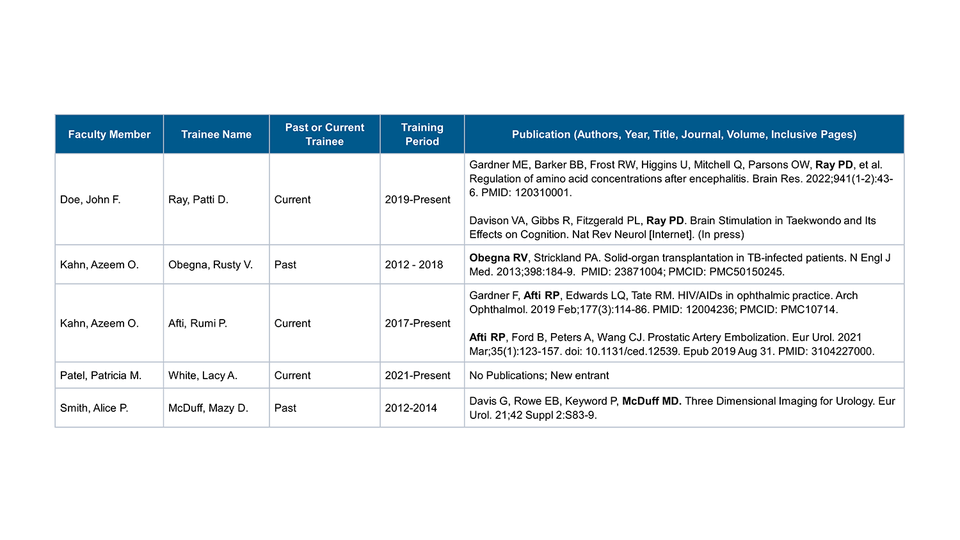Table 5. Publications of Those in Training
Overview
This table demonstrates that the selected mentors successfully nurture trainee productivity, as measured through publications. Factors to consider include the total number of publications for each trainee, first authorship, and publication in high-quality journals.
Overall Instructions
Table 5A (Pre-Docs) & Table 5B (Post-Docs)
- New applications: List publications from mentors’ pre-docs (Table 5A) / post-docs (Table 5B) who may have been appointed to this training program had it existed from the last 10 years AND all current pre-/post-docs. Only include trainees who would have been eligible for appointment.* Exclude short-term training experiences (12 week or less).
- Renewal/revision applications: List publications of pre-docs (Table 5A) / post-docs (Table 5B) appointed to the training grant including all current trainees and those appointed to the grant for up to the past 10 years. Exclude short-term training experiences (12 week or less).
- For students without publications list “No Publications” and provide one of the following allowable reasons:
- New entrant (matriculated that year)
- Leave of absence
- Change of research supervisor
- Left program
- Other
-
Organize the data in this order:
- Sort mentors alphabetically
- Group mentors' trainees by past and then current
- Sort each past and current group chronologically by training period
- List each trainees' publications and manuscripts in peer-reviewed journals (both published and accepted) in chronological order
- Page Limit: None. For more information visit our FAQs.
*Eligibility: In most cases, eligible candidates are citizens or non-citizen nationals of the U.S. or permanent residents. They are required to pursue their research training full time and are normally assigned 12-month appointments, but no less than 9 months. Check the specific FOA for full details.
- Pre-docs: Trainees must be enrolled in a program leading to a PhD or equivalent research doctoral degree program. Health-professional students who wish to interrupt their studies for a year or more to engage in full-time research training before completing their formal training programs are also eligible.
- Post-docs: Trainees must have received a PhD, MD, DDS, or comparable doctoral degree at the time of their training grant appointment start date. Check the specific FOA for a list of comparable doctoral degrees. Individuals in postgraduate clinical training who wish to interrupt their studies for a year or more to engage in full-time research training before completing their formal training programs are also eligible.
Summarize Table 5 data in the Research Training Program Plan's narrative Program Faculty subsection, e.g. average number of publications, number of trainees published as first author, number of trainees who completed doctoral training without any first-author publication resulting from their graduate research.
Helpful Hints
Trainee's Publications Indicate Strong Mentorship
- Mentors’ trainees should have successful publication records with a combination of first authorship and collaboration. Avoid having too many mentors with few or no trainee publications. Publications relate closely with trainee career outcomes (reported in Table 8), and demonstrate the effectiveness of the proposed mentorship team by these totals.
- If you are uncertain whether a publication arose from the training grant or the faculty’s lab, check whether the publication is within three years preceding the trainee’s training timeframe and ask the faculty member to verify. PubMed also links training grants associated with each publication.
- Example: Dr. Ombi’s trainee publication information shows that out of 5 former trainees, only one trainee published in the past seven years. The administrative team follows up with Dr. Ombi to request that he provides one of the allowable "no publication" reasons for each trainee.
Guidance by Column
- Faculty Member. Last Name, First Name and Middle Initial
- Trainee Name. Last Name, First Name and Middle Initial (only include trainees from the past 10 years)
- Past or Current Trainee. By faculty name, order their trainees by Past then Current students; sort each group by the first year of their training period
- Training Period. Enrollment period in the format YYYY-YYYY (use “YYYY-Present” for current trainees)
- Publication (Authors, Year, Title, Journal, Volume, Inclusive Pages). Only include publications directly associated with the training program, from the training program’s time period, and/or through the completion of their degree; DO NOT list publications from before or after the trainees’ time in the training program.
- Bold the trainee’s name
- Only include peer-reviewed publications
- Publications must have been published or “in press”; In progress manuscripts are not allowed.
- If a trainee has multiple publications, list in chronological order
Sample Table 5
Note: Follow NIH formatting guidelines – this is a visual demonstration and does not reflect NIH formatting or accurate information/data.
Table 5. Publications of Those in Training (Pre/Postdoctoral)

Templates
- NIH Blank Template: Table 5A (Microsoft Word)
- NIH Blank Template: Table 5B (Microsoft Word)
- Contact GSUTraining@mednet.ucla.edu for formatted Microsoft Excel templates
NIH Resources
-
Data Table Form Library (Please note as of January 2023 NIH is still utilizing FORMS G for Data Tables)
- Consolidated Sample Data Tables and Instructions (Microsoft Word)
- Blank Data Table Template (Microsoft Word)
- Data Table FAQs